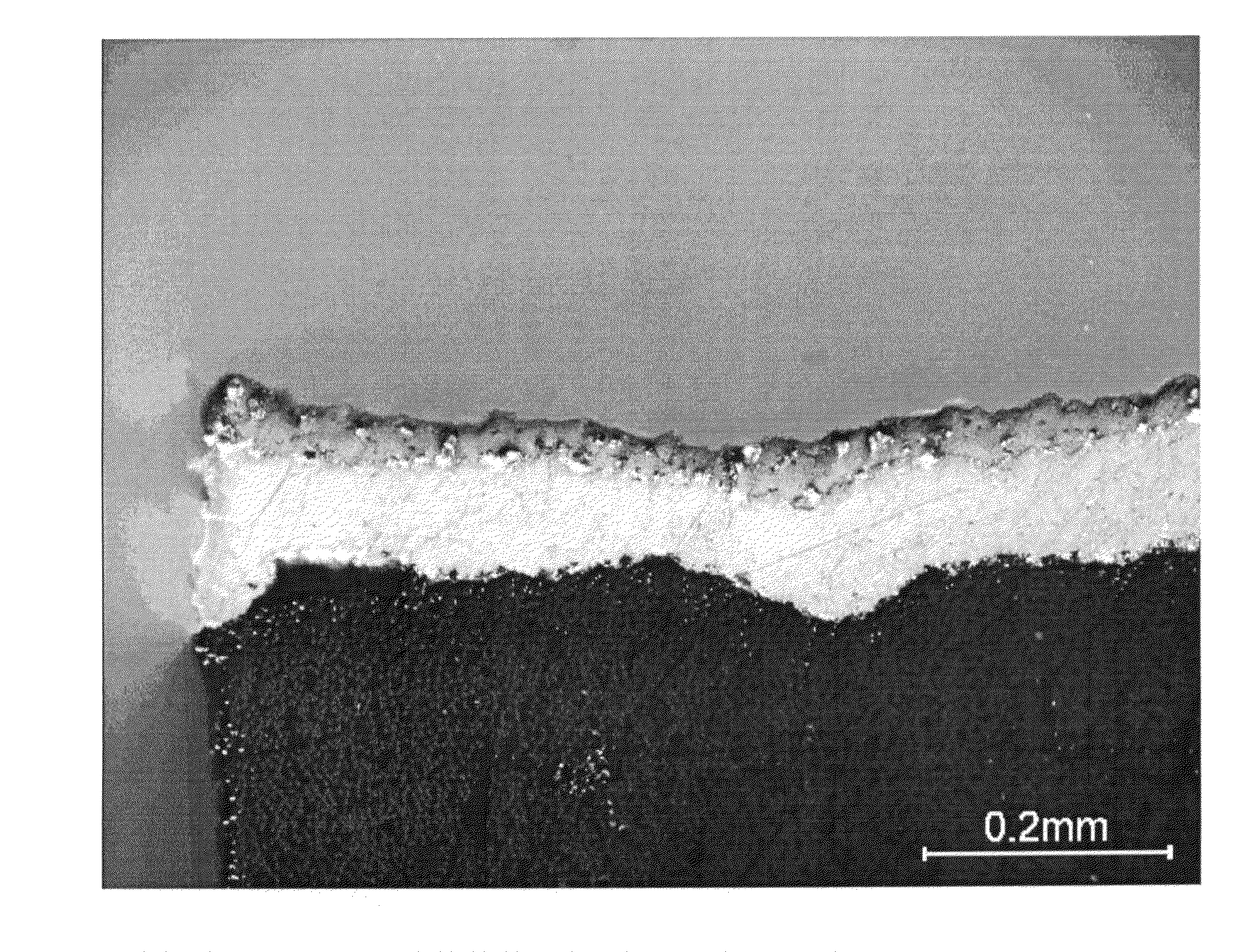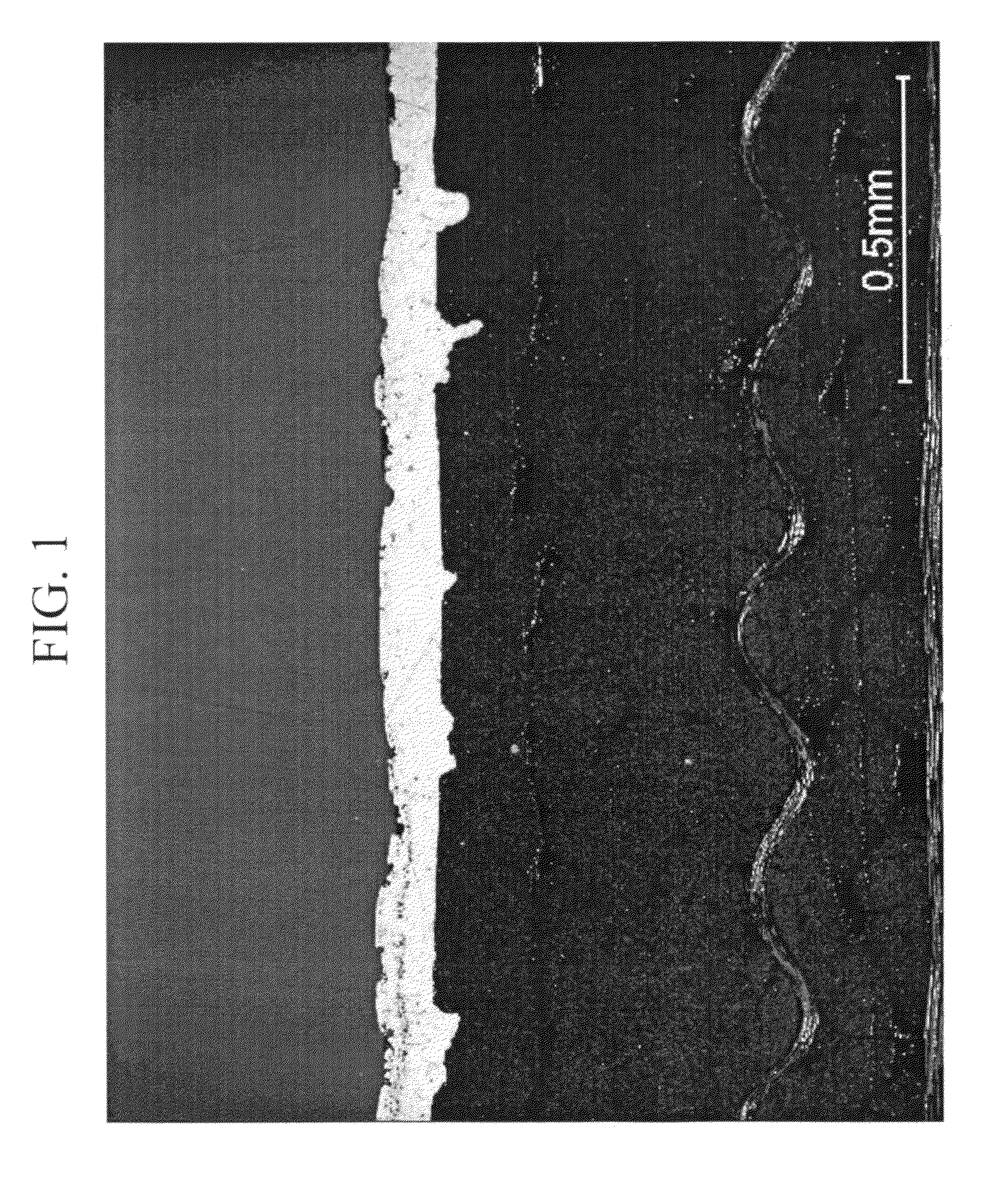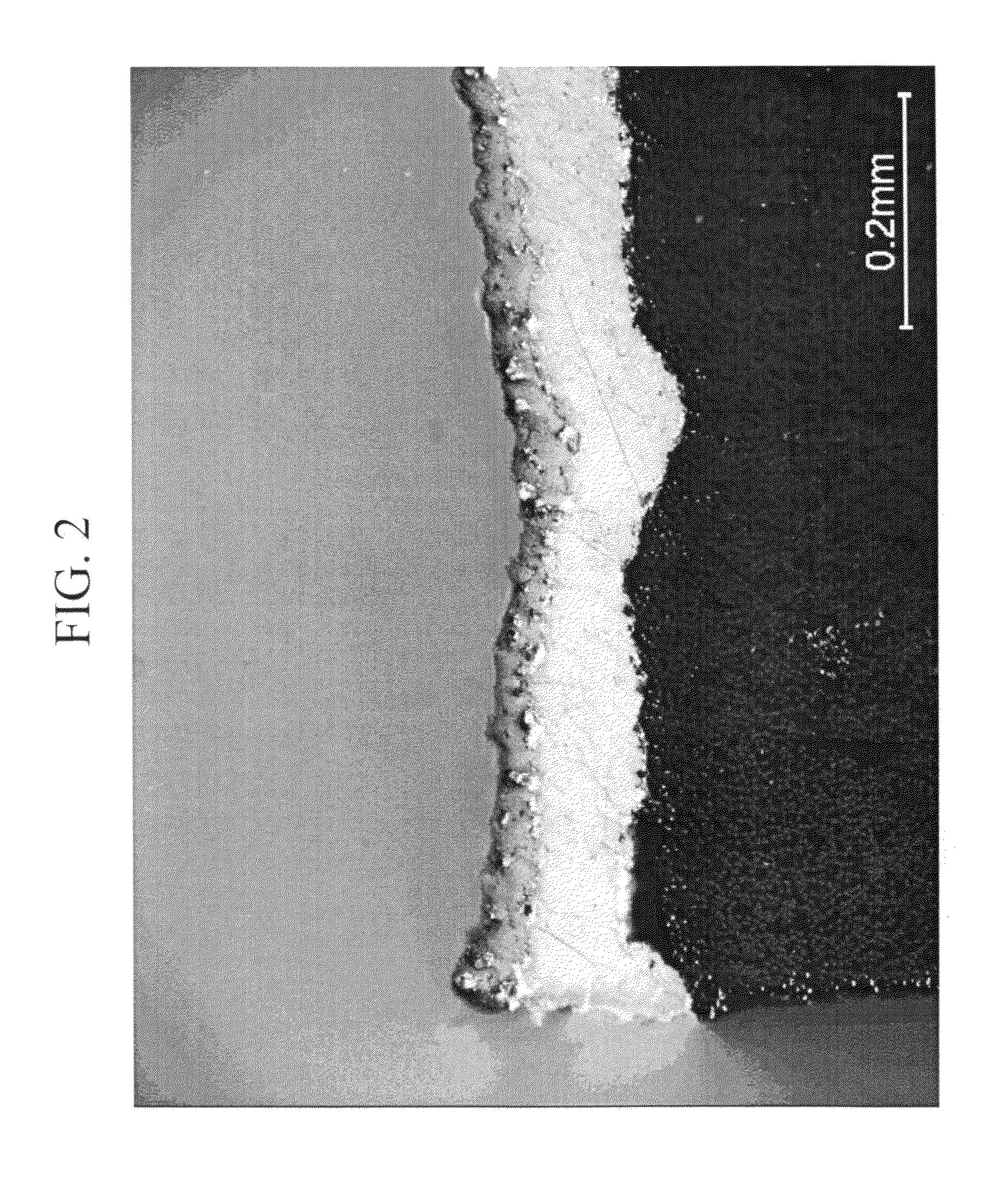Process for Imparting Conductivity to Surface of Formed Article, and Formed Article with Surface Conductivity
- Summary
- Abstract
- Description
- Claims
- Application Information
AI Technical Summary
Benefits of technology
Problems solved by technology
Method used
Image
Examples
example 1
[0032]A formed article produced from a carbon fiber reinforced plastic (CFRP) was subjected to a cold spraying treatment under the conditions described below, thereby imparting conductivity to the surface of the formed article.
[0033]Metal particles: tin particles, average particle size 40 μm Spraying conditions: spray pressure 0.5 MPa, gas heating temperature 300° C.
[0034]A cross-sectional photograph of the formed article with surface conductivity obtained via the above conductivity-imparting treatment is shown in FIG. 1.
[0035]From FIG. 1 it is evident that the tin coating has been formed with favorable tracking of the unevenness on the surface of the formed article.
example 2
[0036]A formed article produced from a carbon fiber reinforced plastic (CFRP) was subjected to a 2-stage cold spraying treatment under the conditions described below, thereby imparting conductivity to the surface of the formed article.
(First Cold Spraying Treatment)
[0037]Metal particles: tin particles, average particle size 40 μm
[0038]Spraying conditions: spray pressure 0.5 MPa, gas heating temperature 300° C.
(Second Cold Spraying Treatment)
[0039]Metal particles: copper particles, average particle size 30 μm
[0040]Spraying conditions: spray pressure 0.6 MPa, gas heating temperature 400° C.
[0041]A cross-sectional photograph of the formed article with surface conductivity obtained via the above conductivity-imparting treatment is shown in FIG. 2.
[0042]From FIG. 2 it is evident that the tin coating has been formed with favorable tracking of the unevenness on the surface of the formed article, and that the copper coating has then be formed on top of the tin coating.
PUM
| Property | Measurement | Unit |
|---|---|---|
| Electrical conductivity | aaaaa | aaaaa |
Abstract
Description
Claims
Application Information
 Login to View More
Login to View More - Generate Ideas
- Intellectual Property
- Life Sciences
- Materials
- Tech Scout
- Unparalleled Data Quality
- Higher Quality Content
- 60% Fewer Hallucinations
Browse by: Latest US Patents, China's latest patents, Technical Efficacy Thesaurus, Application Domain, Technology Topic, Popular Technical Reports.
© 2025 PatSnap. All rights reserved.Legal|Privacy policy|Modern Slavery Act Transparency Statement|Sitemap|About US| Contact US: help@patsnap.com



